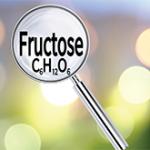Precipitation of acute gout flares is a common form of allopurinol intolerance, but can be satisfactorily addressed in most patients by prophylactic colchicine with evidence-basis, or by prophylactic non-steroidal anti-inflammatory drugs (NSAIDs without evidence-basis at this time. However, allopurinol intolerance—manifesting, for example, as minor gastrointestinal and central nervous system toxicity—occurs in up to 10% of patients. Allopurinol hepatotoxicity typically presents as elevation in transaminases, a manifestation that can be difficult to precisely attribute to allopurinol. Unfortunately, more severe hepatotoxicity can develop, often cryptically. The nonselectivity of allopurinol effects in both purine and pyrimidine metabolism potentially factors into gastrointestinal, central nervous system, and hematologic toxicities.
Advances: URAT1 and Uricosurics
Hyperuricemia in most patients with both primary and secondary gout is driven by renal underexcretion of uric acid. Stunning advances have occurred in the understanding of uric acid handling in the nephron. Urate anion exchange with organic anions at the apical side of renal proximal tubule epithelial cell by URAT1 (SLC22A12)—a member of the organic anion transporter (OAT) family—is the linchpin for renal reabsorption of urate anion from the tubular lumen.
The work of Hitoshi Endou, MD, PhD, and colleagues has also revealed that the particularly potent and effective uricosuric benzbromarone, as well as several less potent uricosurics (probenecid, losartan, sulfinpyrazone, and high doses of salicylates), exert uricosuric activity via inhibition of URAT1.3 Further, testosterone increases and estrogen decreases URAT1 expression. Certain URAT1 single nucleotide polymorphisms (SNPs) have been linked to altered susceptibility to gout in different cohorts. Indeed, the ability to pharmacogenomically assess for potential responsiveness to specific uricosurics is close at hand.
The identification of URAT1 functions, including URAT1 association in macromolecular complexes that jointly influence sodium and urate reabsorption, provides a platform to rationally design a new generation of more selective, and potentially more effective, uricosurics. However, attendant risks of urolithiasis and renal toxicity limit the potential of more potent, rationally designed uricosurics to be clinically safe agents in managing the most needy subjects with difficult gout. Many patients with difficult gout are intolerant of allopurinol but cannot receive uricosurics as an alternative due to renal insufficiency or uric acid overproduction.
Novel Xanthine Oxidase Inhibitors
Xanthine oxidase is reversibly interconvertible between reduced and oxidized forms (xanthine dehydrogenase and xanthine oxidase, respectively)—both of which catalyze the formation of uric acid as the end product of purine nucleotide catabolism.4 (See Figure 2) However, oxypurinol dissociates from—and does not effectively inhibit—uric acid formation by the oxidized form of the enzyme. Though oxypurinol is tolerated in some allopurinol-hypersensitive patients, oxypurinol carries many of the limitations of allopurinol, is variably absorbed in the gut, and has not yet performed as a satisfactorily effective antihyperuricemic agent in adequately powered clinical trials. One wonders if xanthine oxidase may exist predominantly in the oxidized form in some patients where robust doses of allopurinol fail to satisfactorily lower serum uric acid. In my clinical practice, I order serum oxypurinol levels for patients in whom there are questions about either compliance with allopurinol or unidentified pharmacogenomic limitations to allopurinol treatment.


